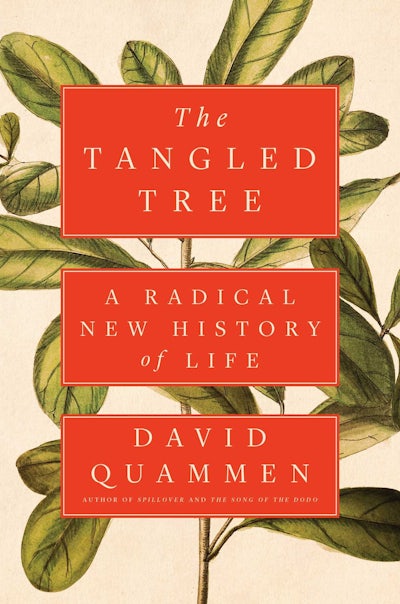via The Scholary Kitchen by David Crotty
Prepare to find out that your most basic concept of reading is a lie! Well, maybe it’s not that dramatic, but the video below details the ten letters that have been dropped from the English alphabet. Do you know when to use a long s rather than a regular s? How about whether to use thorn or eth? You’ll find out these rules, along with how to use ash, ethel, wynn, yogh, and a few others.
Knowing this is seriously going to mess up being able to sing the alphabet song to the same tune as “Twinkle Twinkle Little Star”.
==============================
via About History by Alcibiades

The Sicilian expedition was a military campaign during the Peloponnesian War, during which the Athenian fleet attempted in 415-413 BC to capture Syracuse. In 415 BC, a large Athenian fleet under the command of three strategists; Alcibiades, Nicias, and Lamachus; sailed to Sicily. After the departure of Alcibiades and the death of Lamachus, Nicias inevitably became sole commander of the operation. The main event of the expedition was the siege of Syracuse which, for about two years, Nicias unsuccessfully led. For a long time, Syracuse was on the brink of defeat, but the arrival of Spartans under the command of Gylippus broke the course of military operations. In 413 BC, the Athenian troops were defeated, and their commanders were executed.
Continue reading
==============================
via Arts & Letters Daily: Adam Gaffney in The New Republic
In Darwin’s theory, parents pass traits down to their children and the best survive. David Quammen’s new book explains a more complicated process.

Two years ago a New Scientist headline announced the “world’s first baby born with new ‘3 parent’ technique.” Whereas an embryo is usually produced by one sperm and one egg, this technique uses genetic material from three separate people. First performed by a New York fertility clinic in Mexico to evade US legal restrictions, the procedure has now been replicated several times. A clinic in Ukraine started offering a similar procedure in late 2016 (albeit on shaky ethical and medical grounds), while regulatory authorities in the United Kingdom approved its use for two women earlier this year.
Continue reading
==============================
via the Guardian by Sam Leith
This book may be the product of a publishing trend, but the range and subtlety of the Greek philosopher’s thought are thrilling

Aristotle … a detail from Raphael’s The School of Athens (1509-1511). Photograph: Heritage Image Partnership Ltd/Alamy
It’s hard to imagine, at this distance, how it must have been to be Aristotle in his own time: cutting-edge rather than foundational. We see him standing at the beginning of western philosophy and surveying something like virgin territory. Did it feel like that at the time? He didn’t know, obviously, that he was an Ancient – at the start of things, as we now see it, rather than, say, at their end. He was interdisciplinary before there were really disciplines to worry about. Look at him, romping across the territory of possible human knowledge like a big dog snapping at butterflies, or Theresa May running through a field of wheat. One moment he invents literary theory. At another he formulates the rules of human persuasion. Whoops: politics. Bang! Catharsis! Hello: musicology. Ethics! Psychology! And while we’re at it who wants to know how a cuttlefish works?
Continue reading
==============================
via Interesting Literature
In this week’s Dispatches from The Secret Library, Dr Oliver Tearle celebrates the third and lesser-known collection from A. E. Housman
A. E. Housman wasn’t a prolific poet. His first volume, A Shropshire Lad, was published in 1896 when he was in his late thirties. His second collection, Last Poems, which appeared 26 years later, lived up to its name and was the final volume to appear in his lifetime. When Housman died in 1936, his will ordered his brother, Laurence, to destroy his prose manuscripts, but he left the fate of his remaining unpublished poems up to his brother. Those which Laurence Housman considered worth preserving and publishing – if any at all – A. E. Housman allowed to be published. The result was More Poems, a collection of 48 poems written over a period spanning nearly half a century.
Continue reading
==============================
via the Big Think blog by Mike Colagrossi
Bright pink? Lava? Liquid planets that could hold water? Some far-out planets are truly... out of this world.
Exoplanets are planets that lie beyond our own solar system and revolve around other stars many light years away. In the past two decades, thousands have been discovered, most of them with NASA’s Kepler Space Telescope. Many of these planets take the namesake of this telescope – the Kepler-10b was one of the first confirmed terrestrial planets to be discovered outside of our solar system. It is incredibly close to its star the Kepler 10. The discovery of this planet excited scientists as it was the first confirmation of an exoplanet.
Continue reading znd get blown away by the numbers as well as the images. Something that is over 12 thousand light years away? Incomprehensible.
==============================
a post by Richard Davies for the AbeBooks blog

Sagittarius: Archer in Latin, and this constellation is usually represented by a centaur firing an arrow
Alexander Jamieson was an 18th century schoolteacher who wrote textbooks on the side. His books included A Grammar of Universal Geography, A Grammar of Logic and Intellectual Philosophy and the Mechanics of Fluids for Practical Men, and you can be excused for giving these three a miss. But you cannot turn your back on Jamieson’s Celestial Atlas from 1822.
Born on the Isle of Bute, the son of a Scottish wheelwright, Jamieson became a member of the Astronomical Society of London and is chiefly remembered for his beautiful depiction of the heavens in a celestial atlas. The book’s full and lengthy title is A Celestial Atlas, Comprising a Systematic Display of the Heavens in a Series of Thirty Maps, Illustrated by Scientific Descriptions of their Contents, and Accompanied by a Catalogue of the Stars and Astronomical Exercises.
Continue reading
==============================
via Boing Boing by Andrea James

Mars Reconnaissance Orbiter snapped this giant Martian sand dune that has a turquoise blue hue in enhanced color.
Continue reading
==============================
via About History by Alcibiades

The first war of the Diadochs, from 321 to 320 BC, was fought between the Diadochi of Alexander the Great for the division of his Empire. In 323 BC, Alexander died suddenly, leaving a huge Empire, which included a significant part of the Balkan Peninsula, the Aegean Sea basin and vast territories in Asia. The Empire, which Alexander united with force was a diverse territory that included the highly developed city-states of Greece, the semi-wild regions of Macedonia, the agricultural regions of the Nile, the steppes of Central Asia, and deserts of Persia.
Continue reading
==============================
via Interesting Literature
In this week’s Dispatches from The Secret Library, Dr Oliver Tearle reads The Oxford Book of Local Verses, chosen by John Holloway
In the small seaside town of Bideford in Devon, you can find this three-line epitaph adorning the gravestone of a woman named Mary Sexton:
Here lies the body of Mary Sexton,
Who pleased many a man, but never vex’d one,
Not like the woman who lies under the next stone.
The verse expands, each line getting longer as the sentence reaches its venomous tip, the rhymes of Sexton’s name getting more and more Byronic and absurd. Behind the triplet there is a story, though precisely what the story is, the verse is content to hint at rather than state: in what capacity did Mary ‘please many a man’? Is it fortuitous that her name contains ‘Sex’? Who is the woman lying in the neighbouring grave? One is tempted to suspect a family plot of both kinds: was there some sort of sibling rivalry at work here?Continue reading
No comments:
Post a Comment